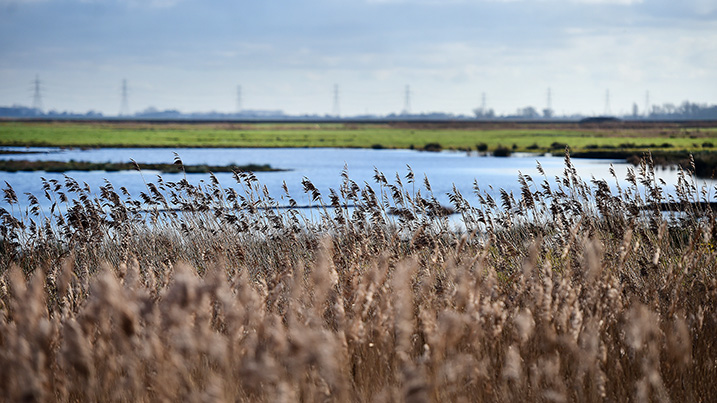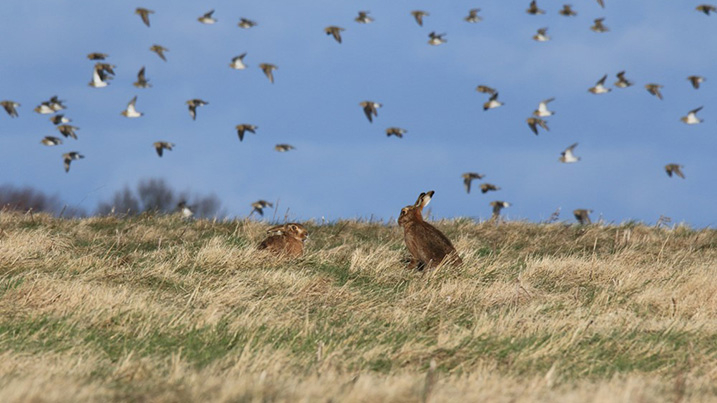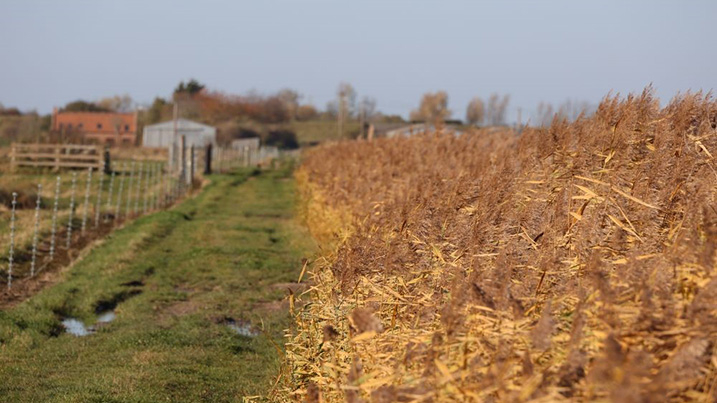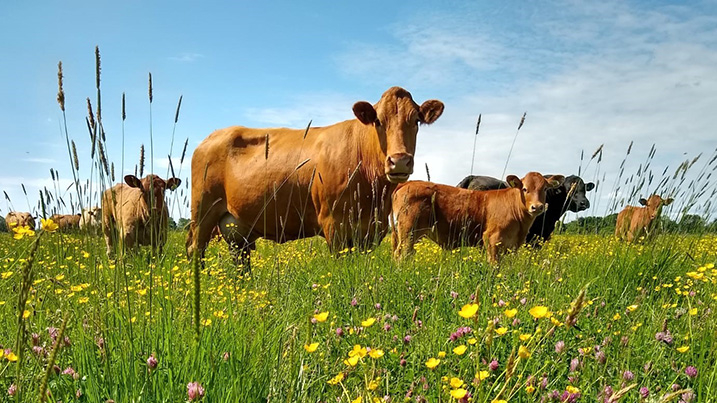Lady Fen
When you first arrive at Welney and step out of your car it is often the activity on Lady Fen that catches the attention of your eyes and ears. This area of wetland creation sits alongside the visitor centre and to roads as you approach from the north or south.

Views across this area can be enjoyed all year round, and outside breeding season access is possible round the perimeter walk loops. The pools closest to the visitor centre can be viewed from a willow screen and from the car park. For elevated views out across the area the best places are the café veranda and the bridge decking. It’s always worth scanning for birds and mammals at the start and end of your visit.
Once the breeding season has finished we are able to open the walk routes, 3.6km or 4.6km. These loops allow you to get to the further pools and scrapes as well as to check the drainage board ditches for dragonflies and damselflies during the summer. Benches dotted around the route allow you to take your time and pause to wait for views of hares and deer in addition to the birds. In late summer and autumn we can be treated to visits from an increasing number of cranes which may mean that only part of the walk route is open to prevent disturbing them (best to check the recent sightings and with us in centre before you visit).

Come winter flocks of swans may choose to roost on the pools if the washes are suffering from deep flooded, flocks of grazing and dabbling ducks can be seen on and around the pools. Out across the grassland you may find flocks of starling, fieldfare and redwing, cattle egrets feeding around the flocks of sheep or spy the low, slow flight of a short-eared owl.

Lady Fen provides a vital wetland area when the washes are flooded and unavailable to many species of bird. This can occur at any time of year. It is also an additional space for wintering and breeding birds, increasing the amount of wetlands available at Welney by almost a third. It has hosted some pioneering breeding species like crane and black-winged stilt and also accommodates the rearing and release stages of Project Godwits headstarting work with the black-tailed godwit.

Lady Fen was previously arable farmland, being turned into wet grassland from 2007 to 2013 in three phases. From a handful of breeding birds recorded in 2007 to present day where ducks including gadwall, garganey, shoveler and tufted duck; waders like avocet, little ringed plover, black-tailed godwit and lapwing; and passerines like yellow wagtail, meadow pipit, reed warbler and corn bunting are all finding their space to breed is incredible. To promote the health of the wet grassland in a natural way herds of cattle are introduced in spring, owned by local farmers, and remain with us through the summer into autumn. Another creatures to enjoy getting close to, and worth a closer look amongst the herds for birds like yellow wagtail that at times follow along to feed on the insects they attract.
- In this section